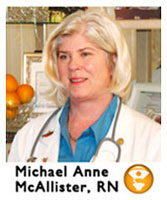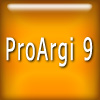Follow IVC
on Facebook
Vitamin
Tweet
Stay up date
on IVC's Blog
Vitamin C & Cancer
Videos
ProArgi9 Nutritional Suppliment
Intravenous Treatment Rational and Benefits:
Many patients, with a wide variety of illnesses, both acute and chronic, consistently benefit from multiple intravenous infusions of vitamins and minerals.
This was noticed some thirty years ago by the late John Myers MD, a physician in Maryland, USA. He used these infusions regularly, and the most basic form of this therapy, the Myers Cocktail was named after him. Over the last decade, Dr. Alan Gaby, president of the American Holistic Medical Association, has brought the benefits of these infusions to the attention of holistic physicians. Although not widely known or written about in mainstream medicine1, they are used by hundreds of holistic physicians the world over.
Effect of infusions vitamin Therapy: In chronic fatigue, fibromyalgia and chronic depression, patients often feel an energy lift that can last for days or weeks. This effect of increasing energy and reducing symptoms is often experienced by sufferers from asthma, cardiac failure, chronic allergies, recurrent infections and even some forms of non-Alzheimer’s dementia. Stressed and overworked people can recover faster and increase their resistance.
What is the treatment? Intravenous Vitamin therapy (IVVT) consists of injecting a number of vitamins and minerals into a vein, either rapidly over 10-15 minutes (called a push) or more usually over 1-2 hour drip more comprehensive than original Myers Cocktail. They are: Vitamin B complex, Vitamin C, Vitamin B5, Vitamin B6, Vitamin B12, Magnesium, Selenium, Zinc, Manganese and Molybdenum. Homeopathic complexes and antioxidant amino-acids are sometimes added for greater effectiveness.
Is IVVT a natural therapy? Although the administration of anything through a vein may be regarded as unnatural, the mechanism of action of IVVT convinces me that it is fundamentally natural, merely more intensive as needed to cope with the consequences of our very unnatural environment and lifestyles. The contents of the drip, no matter how high the dose, do not have drug action. They do not force the body to carry out certain changes. Rather, they provide the body with critical nutrients that it needs to generate increased energy to address the health problems in its own way. This reliance on the innate healing wisdom of the body is, in my view what makes a treatment truly natural.
How does IVVT work? There are three main factors that contribute to the action of IVVT. Firstly, the intravenous injection route bypassed the intestines. In chronic illnesses, the intestines are often inflamed; they have an increased permeability2. They fail to absorb important vitamins and minerals efficiently. This often leads to low levels of nutrients in the tissues even when dietary approaches and nutritional supplements should be providing optimal nutrition. Secondly, the levels of nutrients needed for maximal healing vary widely between individuals, however most people require a very high level of one or other nutrient in the tissues to get the best healing effect. Illness means that we may be using out nutrients up faster then normal, so our needs are greater. In order to get high levels of nutrients to where they are needed (inside the cells, in the mitochondria and nuclei), IVVT achieves high blood levels and produces effects (by mass action) that cannot possibly be achieved in any other way. Thirdly, several of these nutrients such as vitamin B1 3 and Magnesium 4, are critical for energy production, particularly in the many enzyme systems of the cellular powerhouses called mitochondria. The ratio of ATP to ADP is a marker of the amount of free energy available in tissues. Studies have shown that IVVT normalizes these ratios in ill patients. This effect has been referred to as mitochondrial resuscitation5.
How many IVVT treatments are needed? The drips are usually given once or twice a week. Some people notice dramatic benefits from each infusion, however for most the effect is more cumulative, noticed after the third of fourth infusion. A course is usually 5 infusions, however some patients with chronic conditions continue to them every few weeks, or whenever they feel a dip in the energy.
What are the side effects of IVVT? Patients may notice a mild flushing sensation or may taste the vitamins in the mouth. Actual side effects are very rare, the only real one being slight irritation of the vein. Sensitivity to a preservative in one of the nutrients could possibly cause tired feeling or headache, however this is even more rare. If this does occur, the offending substance can be identified and omitted.
IVVT is safe and inexpensive, with wide application in many disorders. There are publications on the effects of some of these nutrients studied individually 6, 7, 8, 9, 10, 11, 12, however it is our view that the combined effect of having completely adequate supplies of several nutrients present in the cells at the same time is far greater that the effect of any single nutrient.
Who can benefit from IVVT? IVVT can be helpful in overcoming infections (cold, flu, chest infections) as well as in accelerating recovery from exhaustion of all types. It helps with heart disease, stress, depression, cramps, allergies, and asthma. Other users are in certain forms of dementia and to correct abnormal cervical smears. Healthy people can us IVVT when an energy lift is needed and it is part of an anti-aging program.
INTRAVENOUS ASCORBATE:
When needed we use Ascorbate infusions. Ascorbic acid (Ascorbate) is the chemical name for vitamin C. Ascorbate treatment consists of Vitamin C given intravenously in much larger doses than normally taken by mouth. The Ascorbic acid is usally mixed with a combination of different carrier solutions, which often contain a variety of Vitamins, Minerals, Amino Acids and intermediate biologically active components.
Ascorbic Acid (Vitamin C) is extremely safe and a person can take very large doses without difficulty or danger. Ascorbic Acid acts in the body as both an oxidizing and reducing agent, thus improving free radical balance. It is useful for accelerating the removal of heavy metals from the body.
The complexity of its action is much like that of hydrogen peroxide. In fact there is mounting evidence to make us think that the stimulation of the immune system and the rate of healing achieved by Ascorbate treatment is through an increase in hydrogen peroxide within the body induced by Ascorbic acid.
Ascorbate treatments can slow down or reverse chronic degenerative disease and will often stop and acute illness, such as influenza within a few hours. These treatments are frequently used to improve nourishment in any person who has been chronically ill for a long preparation to receiving other forms of treatment.
If a person anticipates having elective surgery it can be helpful to have an Ascorbate infusion weekly for 3 to 4 weeks before surgery. A 20 year experience has shown that this will afford the person a great deal of protection against the damaging effects of the anesthetic and the physical stress of the surgery. Patients who prepare themselves in this fashion heal and recover from surgery much faster then patients who have no pre-surgery preparation.
REFERENCES:
- Lonsdale D., Shamberger R., Stahl J., Evans R, Evaluation of the biochemical Effects of Administration of intravenous Nutrients using Eythrocyte ATP/ADP Ratios. Altern Med. Rev. 1999 4(1):37-44
- Johnson SD, Smye M., Watson RG. intestinal permeability morphoretic recovery in celiac disease. Lancet 2001:358:259-260
- Opinion of the Scientific Committee on Food on the Tolerable Upper intake level of Vitamin B1, European Commission, SCF/NUT/UPPLEV/46 Final 16 July 2001
- Opinion of the Scientific Committee on Food on the Tolerable Upper intake level of Magnesium, European Commission, SCF/NUT/UPPLEV/Final 11 October 2001
- Shoffner JM, Wallace DC, Oxidative phosphorylation disease and mitochondrial DNA mutations: diagnosis and treatment. Annu Re3v. Tutr 1194:14:535-568
- Spivery WH, McNamar RM, Greenspon L., Intravenous magnesium sulfate for the treatment of acute asthma in the emergency department. 262 1210 1213
- Brunner EH, Delabroise AM, Haddad ZH. Effect of parenteral magnesium on pulmonary function, plasma CAMP and histmine in bronchial asthma. J Asthma 1985:22:3-11
- Okayama H, Aikawa T, Okayama et al. Bronchodilation effect of intravenous magnesium sulfate in bronchial asthma. JAMA 1957:257:1076-1078
- Okayama H, Okayama et al. Treatment of status s asthmaticus with intravenous magnesium sulfate J Asthma 1991 28-11-17
- Mauskop A, Altura T, Cracco RQ, Altura BM. Intravenous magnesium sulfate relieves migraine attacks in patients with low serum ionized magnesium levels. A pilot study clin sci 1995:88:533-536.
- Mauskip A, Altura Cracco RQ, Altura BM. Intravenous magnesium sulfate rapidly alleviates headaches of various types. Headache 1996:35:154-160.
- Baur H, Staub H. Treatment of hepatitis with infusions of ascorbic acid: comparison with other hepatitis with infusions of ascorbic acid: comparison with other therapies. Schweiz med Wehnschr 1954:84:585-597. (article in German)
FREQUENTLY ASKED QUESTIONS: WHAT’S IN THE VITAMIN RESCUE?
Vitamins:
B5 - Dexpanthenol
B6 - Pyridoxine...Helps with antibody formation, carbohydrate absorption, fat and protein utilization (weight control) hemoglobin and hydrochloric acid production, magnesium and linoleum acid function, sodium / potassium balance (nerves) typtophane conversion (niacin).
B complex - cell growth, fatty acid production, metabolism (carbs, fats and proteins), vitamin B utilization, lecithin formation, liver and gallbladder regulation, metabolism of cholesterol, cholesterol reduction, nerve transmission, artery hardening retardation, fat emulsifier, hair growth, antibody formation antihistamine action, cortisone production, stress tolerability and vitamin D utilization.
Folic Acid - appetite stimulant, brain function, cell growth and reproduction, circulation, DNA & RNA production, hydrochloric acid production, liver performance, nucleic acid formation, protein metabolism RBC formation.
Vitamin C - antioxidant, anti-stress, collagen production, detoxifier, digestion, fine bone and tooth formation, healing (burns and wounds), iodine conservation, increase iron absorption from food, pain reduction, RBC formation (hemorrhaging prevention, shock and infection resistance [colds], vitamin protection [oxidation].
Minerals:
Zinc - burn and wound healing, carbohydrate digestion, circulatory / immune / metabolic / neuromuscular system, prostate gland function, reproductive organ growth and development, sex organ growth and maturity, vitamin B1 / phosphorous and protein metabolism.
Chromium - stabilize blood sugar levels, glucose metabolism (energy), protein production.
Selenium - antioxidant, DNA and protein synthesis immune response, membrane integrity, pancreatic function, prostaglandin production, retinal blood vessel proliferation, retinal light reception, sexual and reproductive tissue elasticity.
Manganese - enzyme activation, detoxifier, protein production, reproduction and growth, RNA production, sex hormone production, tissue respiration, vitamin B1 metabolism, vitamin E utilization, fat and carbohydrate metabolism.
Calcium - androgen / cortisone and estrogen production, bone / tooth formation, blood clotting, heart rhythm, nerve tranquilization, nerve transmission, muscle growth and contraction, permeability of cell membranes.
Magnesium - Acid/alkaline balance, blood pH maintenance, blood sugar metabolism (energy), cortisone production, calcium and Vitamin C, protein structuring (RNA & DNA).
Taurine - sulfur containing Amino Acid. Produced by the metabolism of Cysteine and Methionine. Second most abundant amino acid in the human milk. Plays important role in development and function of the brain. Dietary Administration: has been shown to retard the development of hypertension and stroke in HTN/Stroke prone rats. Japanese MD’s have proven that diets high in Taurine have shown to lower BP and reduce incidence of stroke. Univ. of South Dakota studies have found Taurine to have Antiarrythmic Activity. A-Lipoic Acid added to help potentiate the affects of taurine as a powerful Antioxidant.
FREQUENTLY ASKED QUESTIONS BY PATIENTS:
Q: What is a intravenous vitamin C cancer treatment?
A: Research shows that intravenous vitamin C at high doses, used in conjunction with chemotherapy or radiation, kills cancer cells in the early stages of cancer. We understand now that intavenous vitamin C is a pro-oxidant, not an antioxidant, because it generates hydrogen peroxide in the extracellular space. H2O2 is the drug that preferentially kills cancer cells while leaving normal cells unharmed. For those in the later stages of cancer, the intravenous vitamin C protocol may improve the quality of life. The protocol also suggests a strict diet with oral supplementation.
Q: How do I know if the infusion therapy will work for my cancer?
A: No one can predict how different tumor types respond - it is very individual. A PET scan usually is a guidepost. If the PET is positive, the tumor usually responds to the vitamin C. If the PET is negative but there is active tumor present, the vitamin C is less effective in most cases. The intravenous vitamin C therapy is an excellent natural boost of the body's natural systems for most cancers. We believe that vitamin C infusion therapy works in the early stages of cancer when used in conjunction with chemotherapy or radiation. Reevaluation of your condition is the only way to tell what is working.
Q: What about taking oral vitamin C (ascorbate) to get the same results?
A: Oral ascorbate is a vitamin and its uptake is tightly controlled and is an antioxidant. Intravenous ascorbate is a drug and plasma and tissue levels are attained many times above oral dosing, allowing the development of hydrogen peroxide, (which means it is working as a pro-oxidant not an antioxidant like the oral form). Hydrogen peroxide is the agent responsible for targeted neoplastic cell death while leaving normal cells unharmed.
Q: Is infusion therapy safe to use in conjunction with chemotherapy, and is there on that should not be used?
A: A G6PD test must be done and results received before any infusions are given. Our physicians have found NO contraindications to giving intravenous vitamin C with any chemotherapy, if their protocol is followed. Additions to the protocol are not recommended. The protocol should NOT be administered in conjunction with methotrexate chemotherapy because of urine pH requirements.
Q: What is a G6PD?
A: G6PD deficiency is an inherited condition in which a person’s body doesn’t have enough of the enzyme glucose-6-phosphate dehydrogenase (G6PD) which helps red blood cells (RBCs) function normally. Patients with this deficiency should not receive vitamin C infusions because it can cause hemolytic anemia.
Q: My oncologist / radiologist is concerned infusion therapy will reduce the effectiveness of my chemotherapy or radiology treatments, is this true?
A: No. That’s a medical myth. At this time it does not appear that concurrently used intravenous vitamin C reduces the effectiveness of chemotherapy or radiation. In addition, intravenous vitamin C is not an antioxidant; it is a pro-oxidant and, therefore, seems to augment the effectiveness of chemotherapy or radiation. Dr. Drisko and our other program physicians often give it on the same day as the chemotherapy and/or radiation treatment.
Q: I was informed that if I have vitamin C infusion therapy that I should also have vitamin B. Why is that?
A: Additional vitamins such as B, may reduce the formation of Hydrogen Peroxide, which is the chemotherapeutic agent formed by intravenous vitamin C.
Q: What is the frequency and lasting effects of infusion therapy?
A: Patients are started out at a low dosage and work their way up to the therapeutic level. Once at therapeutic level the infusions will take between 2 1/2 - 3 hours, depending on the patient’s individual saturation point. Normally infusions should be done twice a week, but some patients may require three times a week.
Q: How often is the therapy required?
A: This varies from patient to patient. Some will require twice a week while some will require three. We recommend doing this for a year during this time the patient will be reevaluated to see the effectiveness of the treatment. If there appears to be no initial benefit after, the infusion therapy may be stopped.
Q: When do I stop infusion therapy?
A: If you have been cancer free for over a year you can concider stopping and can always return if you feel you need to. It is possible that if a patient stops therapy but is not cancer free, they may develop tumor cells that are resistant to the vitamin C infusion therapy.
Q: Can I have the vitamin C infusions done in my home?
A: Yes, we make house calls and will accomodate our patients.
Q: Does smoking effect the vitamin C infusions?
A: Yes, absolutely! The oxidants from cigarette smoking or second hand smoke lower the vitamin C levels in the blood. It is extremely important that patients stop smoking or limit their exposure to second hand smoke.
Q: Besides intravenous vitamin C infusions, what else will?
A: Diet and oral supplements. A healthy diet can make a world of difference and oral supplements should be recommended by your physician on a case by case basis. Also you can look at our list of recommended books on cancer, diets, nutrition, etc. here
Q: What concerns should I have and what questions should I ask my doctor?
A: Look at the top 10 questions to ask your doctor here and for further research, try our links section here which is broken down into sections that cover every topic. You may also find some of the recommended books here are exactly what you are looking for.
You are always welcome to stop in to our facility (driving directions) or call us at 610-449-6600 or email us staff@ivcinfusions.com





